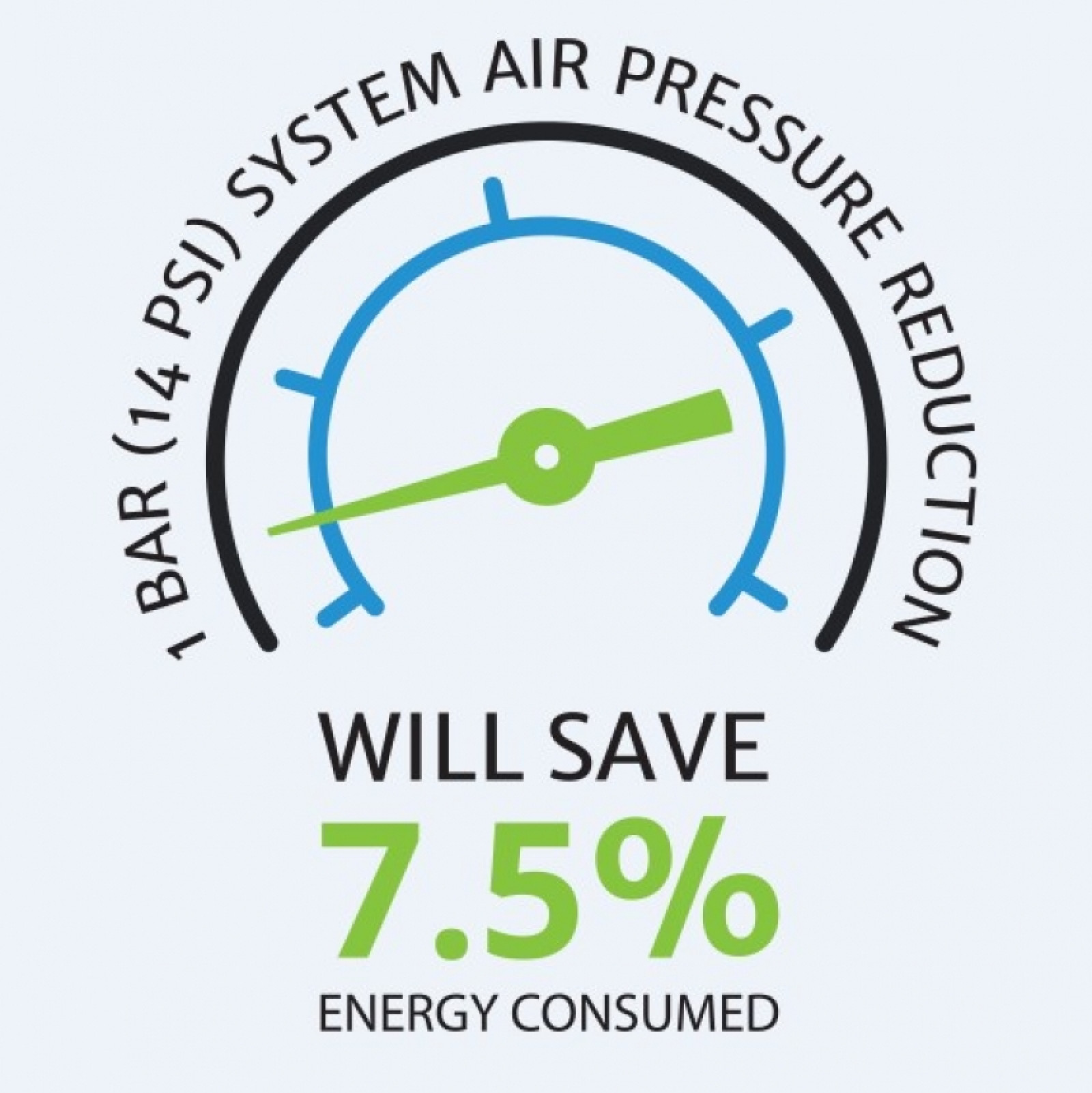Top tips: Steps to efficient compressed air management
Compressed air system design
When you design a compressed air system, the
key is to get the specification right first time, both to make sure that the
compressor is going to fit the processes and to extend its lifespan. To start
with, think about the air intake.
For example, donÂt site it in a polluted or dusty area, as it will suck the
polluted air and dust into the compressor and potentially down the air lines.
Plan from the outset how much filtration you are going to need. Every filter
has a cost associated in terms of maintenance and pressure drop. Also consider
the size of the air receiver into your compressor room design, and other
products such as dryers, drains and oil/water separators.
Compressor life cycle costs
Consider the total life cycle costs of a compressor, not just how much the machine costs to purchase. Typically, a fixed speed compressor costs 7% in purchase price, 11% in maintenance and 82% in energy costs  based on a 75kW compressor running at 8000 hours loaded and subject to regular maintenance. A VSD compressor will on average reduce the portion spent on energy by 35-50%.
Ambient conditions
Did you know that a 5°C increase in air inlet temperature will lead to a 2% reduction in your compressorÂs performance? A compressor runs more efficiently if the air coming into it is not too hot, so a simple measure like opening up the vents will eliminate that 2% efficiency loss.
Operational control
Reducing the pressure
in your air net by 1 bar (14.5 psi) will save 7% in electrical energy costs. If
your processes can run at a lower pressure this is a very simple measure to
take.
A central controller can be used to link all compressors and dryers and select
the best machine combination to deliver the required air output within a lower
pressure band, which will lower the energy bill.
Energy recovery
Heat is an inevitable by-product of air compression. Rather than let this thermal energy vanish into the atmosphere via the cooling system and radiation, it can be reclaimed using an energy recovery system. About 90% of the energy to run a compressor can be recovered and used elsewhere, for example as heat to warm a warehouse, as hot water or steam for industrial processes, or to heat water for hand washing. Re-using this energy helps reduce emissions and lowers your plantÂs energy consumption.
Correct maintenance
Correctly maintaining your compressor will
have a positive effect on its performance. Incorrect or irregular maintenance
will have the opposite effect.
Take oil for example. Oil is a hard-working component and is continually
circulating, as it seals, cools and lubricates the working parts of a
compressor. Always choose the correct grade of oil that has been designed and
tested to ensure operational excellence, and use the correct quantity. Select
an oil that removes cleaning additives and anti-foaming agents, rather than a
cheaper oil that does not, as it will impact on the compressorÂs lifetime.
Filters are another area which can have an impact on the compressorÂs
performance. Original filters that have been designed and tested for pressure
drop and lifetime performance will keep the compressor system running as it did
when new.
Air distribution
The air main network
should be designed to reduce pressure drop and ensure that the right amount of
air reaches the application at the necessary pressure.
Choose pipework of the correct size for the air flow, the pressure and the
distance between the compressor and the points of use.
Check for air leaks  a hole of just 6mm in diameter will leak 28 l/s of air
and could ultimately cost over £3600/year just to power the air leaks. Also
consider the construction of the pipework and the fittings. Steel pipework and
joints can be rough, leading to eddy currents and therefore pressure drops.
A smooth-bore aluminum pipe on the other hand will avoid this turbulence and
deliver the same pressure at the end of the air net as at the start. A drop in
pressure of just 25 millibars will result in a 2% efficiency loss.
Â
                                                                 Â











